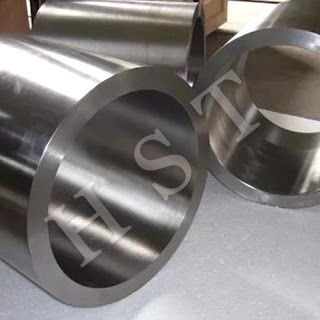Seamless titanium tubes are widely used in the chemical industry. The thinner the tube wall thickness, the higher the heat exchange efficiency. $ 89mmX2mm is a large-diameter, thin-walled pipe, which has the problems of low production efficiency and low yield rate in the production process.
The general production process of $ 89mmX2mm pipe is: extruding billet, LG90 rolling mill blanking, LD120 rolling mill finished product, LG90 rolling mill can perform large diameter reduction and wall reduction processing, and the dimensional accuracy after rolling is low; Due to the limitation of shape, only small diameter reduction and wall reduction can be performed, but the dimensional accuracy after rolling is high. The company has LD120 rolling mill and LG60 rolling mill. The LG60 rolling mill has smaller rolling specifications than LG90 rolling mill and cannot meet the requirements of conventional processes. The current process is to use a 20000kN extruder to squeeze $ 108mmX8mm tube billet and then use LD120 rolling mill Secondary rolling. This process has a low yield rate due to the large drilling loss during the extrusion of the tube billet. More importantly, because the rolling process uses all LD120 rolling mills, the previous pass must be rolled on the LD120 rolling mill before rolling. The finished product passes so that the production efficiency is particularly low and can not meet the requirements of the construction period. Therefore, the existing process must be optimized on the basis of using existing equipment and moulds.
The setting of the rolling process route is generally from the finished product specification to the reverse design of the tube billet before the design, and it is necessary to ensure that the inner hole size of the
titanium exhaust tubing billet in the previous pass is smaller than the diameter of the mandrel used in the next pass rolling Large 1 2mm. To adopt multi-pass rolling processing, in order to improve production efficiency, the optimized plan cannot use the same type of equipment for continuous processing. The optimized process plan shall ensure that the finished product rate of the pipe shall not be lower than the original process, nor shall it add additional costs, and shall not exceed the limit of the deformation rate of the material pass processing.
(1) After checking the extrusion ratio, rolling force and bending stress of the roll, it is found that the better production process of the
titanium threaded tube of $ 89mmX2mm is: using the billet of $ 106mmX8mm, which is cooled twice by the LG60 and LD120 rolling mills Roll out the finished product.
(2) After process optimization, the loss of raw materials is reduced by about 1%, the number of rolling passes is reduced by 1 time, the utilization rate of equipment resources is significantly improved, the wear of the mould is reduced, and the production efficiency is increased by 3 times.







